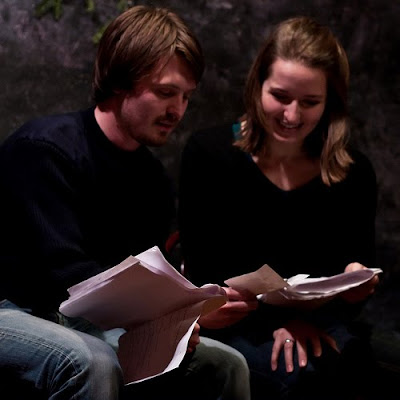Whose Audience Is It, Anyway?
This question is the title of the 5th chapter of
Outrageous Fortune, TDF's new book profiling the the life and times on the new American play. As part of
Isaac's blogging group, I'm writing about Chapters 1, 5, and 6. My thoughts on Chapter 1 are
here.
I share my Chapter with Scott Walters of
Theatre Ideas and
CRADLE fame, and in some ways, he has been writing his eloquent response to the issues addressed in Chapter 5 for years. This frees me up to be more personal in my response, but first, a brief overview.
Chapter 5 acknowledges that all of the issues addressed in previous chapters stem from a dwindling audience of diminished passion. The NEA's ironically titled "All America's A Stage" report shows that the percentage of Americans who attended a nonmusical play over a twelve-month period fell from 13.5 percent to 9.4 percent between 1992 and 2008.
And according to the interviewees of this book, the audience that remains is increasingly conservative in their taste. They do not want plays of formal innovation, cultural difference, complexity, or ambition.
Artistic Directors believe that playwrights are increasingly writing for themselves, drifting away from the concerns and interests of their audience. Playwrights believe there is a different audience out there, but theatres don't know how to reach out and retain them.
The idea of an artistic home once again is proposed as the solution: playwrights writing for specific audiences, audiences following the long term arc of playwrights.
Additionally, several conceptual shifts are recommended: audience should shift to community, product should shift to process, and marketing should shift to contextualizing. These are all ideas that have been advocated for here and elsewhere; and much of my chapter partner Scott's work has been to advocate for a uniquely local approach to artist/audience engagement. I look forward to reading his response.
I'd like instead to focus on a more theoretical question underlying this chapter: who should playwrights be writing for - themselves or the audience? And if the audience, who should be in that audience?
The Old Question
"...the old question which transversed the sky of the soul perpetually, the vast, the general question which was apt to particularise itself at such moments as these, when she released faculties that had been on the strain, stood over her, paused over her, darkened over her. What is the meaning of life? That was all — a simple question; one that tended to close in on one with years. The great revelation had never come. The great revelation perhaps never did come. Instead there were little daily miracles, illuminations, matches struck unexpectedly in the dark; here was one....Mrs. Ramsay saying, "Life stand still here"; Mrs. Ramsay making of the moment something permanent...this was of the nature of a revelation"
-Virginia Woolf, To The Lighthouse
That's why I do theatre: to make life stand still, to make of the moment something permanent, to strike an unexpected match in the dark. I want to know the meaning of life.
And because I suspect that meaning is fluid, experiential, communal, and contradictory, I make theatre instead of novels. Fluid, so the meaning must happen in real time. Experiential, so the meaning cannot be summed up as anything less than the full sequence of events. Communal, so the meaning isn't fully realized until struck by a variety of perceptions. Contradictory, so that no single experience can be the sole proprietor of truth.
My audience is anyone who shares a hunger to know that meaning, and shares a faith that the communal act of play can illuminate it.
In recent posts,
I've talked about my increasing conviction in the importance of the audience's role, and therefore the importance in developing that long term, collaborative relationship between an audience of diverse perception and an artist.
In other words, I write for an audience in order to write for myself; to take a collective grasp of that old question and for a moment, make life stand still here.
Flux has tried to create the kind of home for artists described above through our Flux Sundays development process; and we have opened up that process to our audience through our Have Anothers, Food:Souls, Fore:Plays, and this blog. We are trying to build that community of seekers to take that collective grasp through the obscured cotton-wool of life:
"Behind the cotton wool is hidden a pattern; that we—I mean all human beings—are connected with this; that the whole world is a work of art; that we are parts of the work of art. Hamlet or a Beethoven quartet is the truth about this vast mass that we call the world. But there is no Shakespeare, there is no Beethoven; certainly and emphatically there is no God; we are the words; we are the music; we are the thing itself."
-Virginia Woolf, Moments of Being
I like the sound of that, though I'm not so sure it's true. But I am sure I can't come near the heart of it alone. So let's play.













